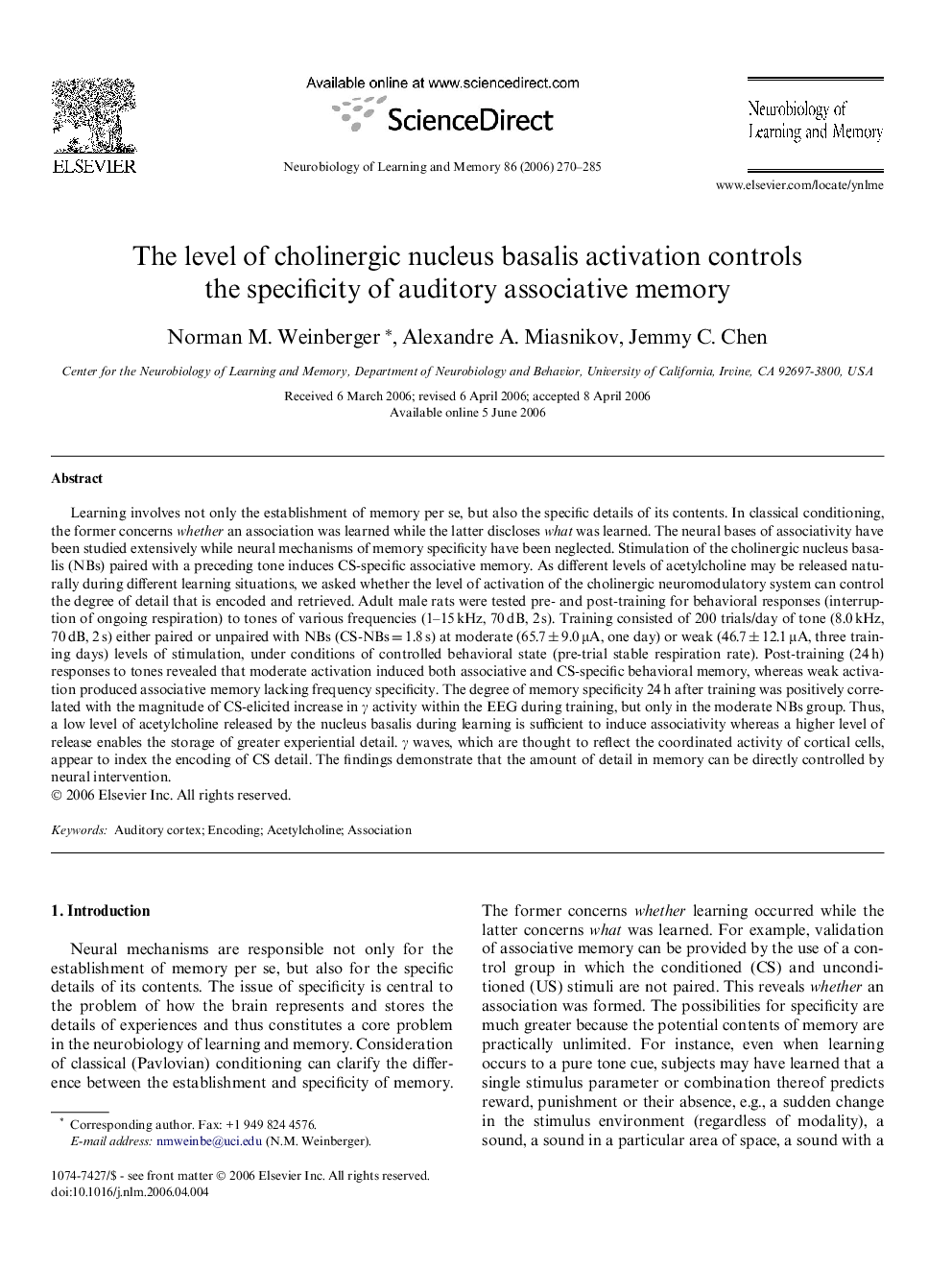| Article ID | Journal | Published Year | Pages | File Type |
|---|---|---|---|---|
| 937062 | Neurobiology of Learning and Memory | 2006 | 16 Pages |
Learning involves not only the establishment of memory per se, but also the specific details of its contents. In classical conditioning, the former concerns whether an association was learned while the latter discloses what was learned. The neural bases of associativity have been studied extensively while neural mechanisms of memory specificity have been neglected. Stimulation of the cholinergic nucleus basalis (NBs) paired with a preceding tone induces CS-specific associative memory. As different levels of acetylcholine may be released naturally during different learning situations, we asked whether the level of activation of the cholinergic neuromodulatory system can control the degree of detail that is encoded and retrieved. Adult male rats were tested pre- and post-training for behavioral responses (interruption of ongoing respiration) to tones of various frequencies (1–15 kHz, 70 dB, 2 s). Training consisted of 200 trials/day of tone (8.0 kHz, 70 dB, 2 s) either paired or unpaired with NBs (CS-NBs = 1.8 s) at moderate (65.7 ± 9.0 μA, one day) or weak (46.7 ± 12.1 μA, three training days) levels of stimulation, under conditions of controlled behavioral state (pre-trial stable respiration rate). Post-training (24 h) responses to tones revealed that moderate activation induced both associative and CS-specific behavioral memory, whereas weak activation produced associative memory lacking frequency specificity. The degree of memory specificity 24 h after training was positively correlated with the magnitude of CS-elicited increase in γ activity within the EEG during training, but only in the moderate NBs group. Thus, a low level of acetylcholine released by the nucleus basalis during learning is sufficient to induce associativity whereas a higher level of release enables the storage of greater experiential detail. γ waves, which are thought to reflect the coordinated activity of cortical cells, appear to index the encoding of CS detail. The findings demonstrate that the amount of detail in memory can be directly controlled by neural intervention.
